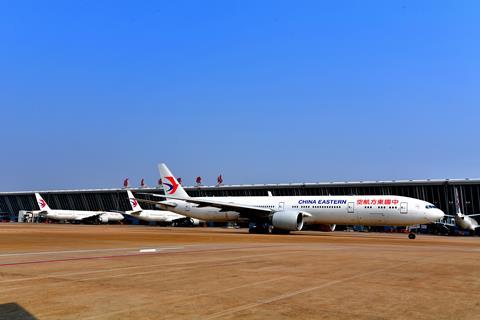A strong recovery in the large Chinese domestic market was the key driver for an improved global airline passenger traffic performance in March, though RPKs still remain two-thirds below pre-crisis levels.
IATA figures for March show total passenger traffic as measured in RPKs was down 67.2% on the same month in 2019. Whilst still sharply below pre-crisis levels, it did at least mark an improvement on February figures - for which passenger traffic was down three-quarters on 2019 levels.

Speaking during a press briefing today, IATA chief economist Brian Pearce noted the improvement in March figures reflects a lift in Chinese domestic traffic after briefly faltering early this year amid a rise in coronavirus cases in the country.
”We saw in March a sharp rebound in domestic air travel,” says Pearce. ”Essentially… as case numbers of coronavirus have been kept contained after a rise in the early months of the year, we have seen a full rebound above fourth quarter levels and we are expecting to see further growth in that market.
”The Chinese market has fully recovered from that very sharp fall in January and February. The other big [domestic] market is the US, [which] because of the very fast rollout of the vaccine programme, is also set to get back to full recovery in the second half.”
IATA figures show domestic traffic overall down only a third on 2019 levels in March. Domestic travel, which in 2019 made up a 36% share of all passenger traffic, now accounts for more than half of global RPKs because of the continued slump in international traffic.
Pearce notes a sharp rise in domestic bookings reported over March and April gives further confidence of the demand rebound in this sector, though he notes this is coming at a cost to yields.
”We are seeing airlines have partly managed to stimulate the travel by very low fares. Particularly in the Chinese market we have seen the average yield down 30 to 40%,” he says.
”Its mostly leisure and VFR travel. We are starting to see some business travel on domestic markets, but premium markets are lagging and average yields are much lower than pre-crisis levels, which is obviously a challenge for airlines – both to stop their burning of cash, but also to support some of the markets that had relied on premium business paying travellers.”
While the surge in coronavirus case rates in India will hit travel in this market, Pearce notes that despite strong growth of recent years, the Indian domestic market itself represents only a relatively small share of traffic. But he says the surge in cases in India does have a wider impact on international traffic, which remains heavily curtailed.
“This situation [in India] is keeping governments very risk averse in opening their borders,” he says.
IATA reports overall international traffic was still 88% below pre-crisis in March. All regions, except the relatively small African market, recorded RPKs down by more than 80% on pre-crisis levels. That includes a 94.8% fall in international traffic for Asia-Pacific airlines - virtually unchanged on the fall reported in February.
Air Cargo demand, meanwhile, reached a new high in March 2021 and stood more than 4% above pre-crisis levels.
”Clearly this reflects what we are seeing outside of the travel and tourism sector – which is a strong economic recovery,” says Pearce. ”Another factor is that at the beginnings of economic upturns, companies, shipppers turn to air cargo to get their products around very quickly and importantly to support their global supply chains. And of course the shipping of the vaccines. So that is what is driving air cargo and we would expect that to continue.
”But it does differ on where your airline is based,” he adds, highlighting the disparity in cargo volumes between operators in the Americas. Freight traffic was 17.5% higher among North American carriers in March over pre-crisis levels, but still down a fifth among Latin American carriers.
”In many ways that reflects government support,” Pearce says. “Airlines in those regions are working in the same markets, which are up generally. But the Latin American situation really reflects that the major cargo carriers in that region are going through a process of restructuring and they have cutback capacity fairly dramatically.
“Generally the picture for cargo is good, however for most airlines and the industry, that is not a big enough business to offset what we have seen in the passenger business.”


























